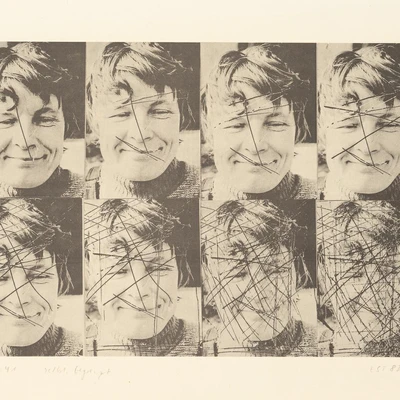Christian Borchert
- * 1942
- † 2000
Life dates
- Artist
Category
Former Dream Typologies
Documenting war ruins in Dresden at the age of 12, Christian Borchert (1942 in Dresden – 2000 in Berlin) was fascinated by photography from childhood onward. Borchert first pursued an engineering degree in film copying (1960-63) and then vocational training as photographer from the Deutsches Pädagogisches Zentralinstitut (1967). While working for Neue Berliner Illustrierte, he pursued a second photography degree at the Hochschule für Bildende Künste Leipzig (1970-75). Pushing himself away from journalism, towards an emerging pulse of art photography, Borchert became a freelancer in 1975 and continued to receive commissions, e.g. for the Akademie der Künste (1978) or Verlag der Kunst (1986).
Borchert dedicated himself to both mundane and exceptional themes, including vignettes of anonymous families in the interiors of their homes, ordinary street scenes, and the historic reconstruction of the Semper Opera in Dresden. August Sander, especially his People of the 20th Century series, greatly inspired Borchert, but he distanced himself from the intellectual-conceptual reading often attached to his predecessor. What peeked Borchert’s interest was simply “how people look, what fashion they wear, how the faces look, what haircuts they have.” Borchert also admitted that unlike press images – which illustrate something and are then discarded – his photographs pulled him back for a second look over and over. They were an opportunity to ruminate on by-gone styles, trends, and dreams.
Shot at the beginning of his independent career, Borchert’s portraits of artists (1975-76), unlike his earlier, more spontaneous documents of everyday life, were premeditated and taken in a consistent format. Borchert familiarized himself with the subject’s artistic work and cultivated (sometimes lengthy) correspondences with them. All of the final prints are ¾ or full-length vertical shots with high tonal contrast, generous space surrounding the figure, and a thin black frame wrapped around the whole. The intimacy of these portraits, set in the artists’ residences, featuring their personal belongings, emphasizes privacy and individuality, while obscuring the public, institutional aspects of East German artistic life.
text: Tobias Rosen
Works by Christian Borchert
Travelling exhibition
Publik machen: 40 Künstler:innen aus dem Bestand des Zentrums für Kunstausstellungen der DDR
Popular keywords
Many more works are hidden behind these terms
